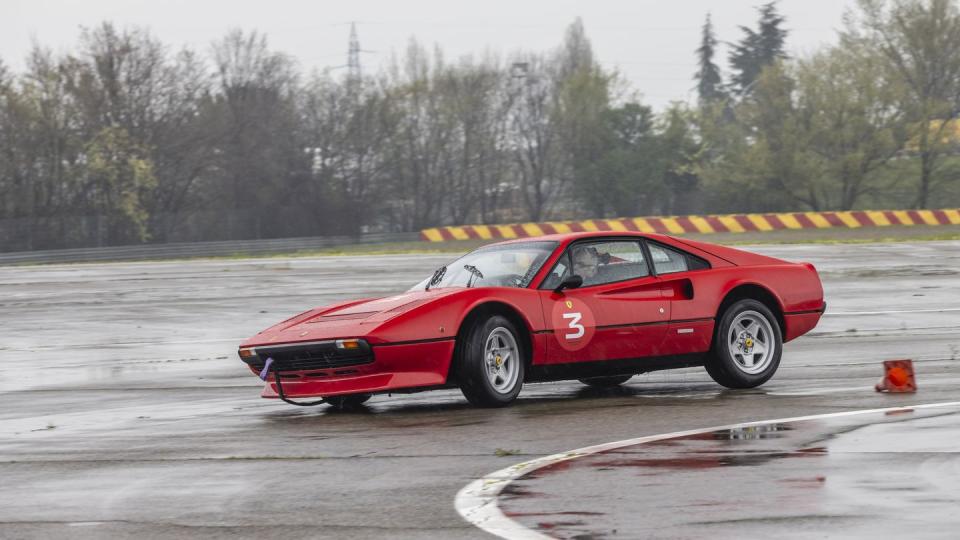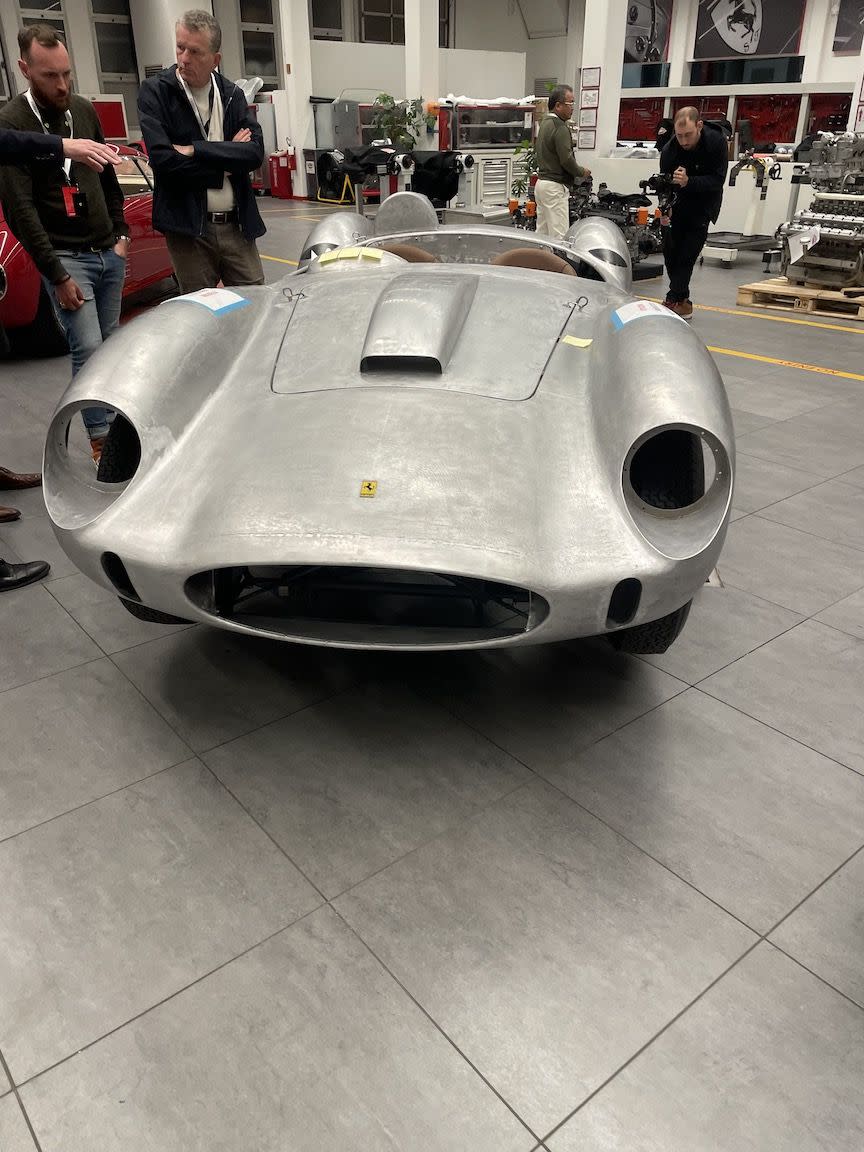Learning to Ride a (Prancing) Horse

"Hearst Magazines and Yahoo may earn commission or revenue on some items through these links."
It's cold, gray, and very wet outside as I speed toward the hairpin at Ferrari's legendary Pista di Fiorano test track, a tricky switchback inspired by Monte Carlo's challenging Gasometer (subsequently La Rascasse) corner. Scant seconds later, with antique wipers vaguely attempting to address the rain pounding the windshield in front of me, I'm braking hard and doing my creaky, old man best to reel in the brutish V-12–powered 1968 Ferrari 365GTB/4 Daytona that I've been invited to drive in a media event celebrating the launch of a new program from Ferrari's Classiche operation, Corso Pilota Classiche.
Available to the regal Italian carmaker's existing customers only, the Corso Pilota Classiche program is an immersive two-day package designed to teach owners of new and vintage Ferraris to better use their valuable machines on the track, focusing on the company's older cars, one assumes with the hope of also increasing sales of modern Ferrari products. As driving schools go, it's hardly the cheapest one might attend. But it's likely the only one that makes a Daytona available to its pupils, along with a 1996 550 Maranello, a 1975 308GTS, a 1980 GTBi, a 1985 3.2 Mondial, and, depending on the day, a 1962 250 Lusso, with a bevy of highly qualified former racing drivers on hand to serve as instructors. These are not the oldest or most valuable Ferraris ever, and it's safe to say F1 pilot Charles Leclerc won't be fine-tuning your heel-and-toe technique, but we can confirm the experience is vastly superior to a poke in the eye with a sharp stick.
Learning on the Test Track
Beyond the arsenal of classic machinery, Corso Pilota Classiche is the only driving instruction program that takes place on the experimental test track that Enzo Ferrari built to vet and fettle the company's racing and road cars. There is great history behind it, which is what the company's Classiche operation, founded in 2006, is all about. Classiche undertakes restoration work near here on Ferrari's longtime premises. Among other mouth-watering treats spied on the day we visited, a 1950s Testa Rossa prototype fitted with the very engine from the car that Alfonso de Portago died in at the 1957 Mille Miglia (a crash rather gruesomely depicted in the recent film Ferrari) in the Classiche workshop for a ground-up restoration.

For a fee, Classiche also certifies cars the company built as correct (or not), utilizing its vast and fastidiously maintained build records to verify specification, original equipment, and any subsequent work done as correct as far as materials and method of construction are concerned, an increasingly important consideration as the value of older Ferraris, especially rare, historic ones, continue their ascent into the stratosphere. Depending on the vehicle in question, costs for this stamp of authenticity range from a few thousand to tens of thousands of dollars; many of its more modern cars are suitable for certification by local Ferrari dealers, while other, rarer, typically older cars will need to be shipped to Maranello for more careful study. Any corrective repairs or part replacements are, of course, extra.
One such car, a very handsome 250 California Spider with a hard top was having a frame outrigger tube replaced, following metallurgical analysis that revealed that the current piece, neatly installed after an accident bent the original, was made from an incorrect alloy. Ah, the cost of keeping it real.

 Yahoo Autos
Yahoo Autos 